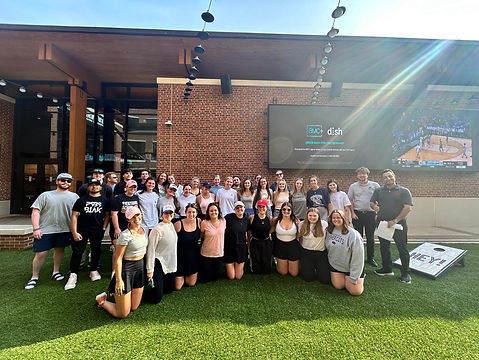Strategic Analysis of Well Red (coffee shop): Group Project

As part of my HOSP 4500 Strategic Hospitality Management course, I collaborated with a team of classmates on an in-depth strategic business analysis of Well Red, a locally owned coffee shop and bookstore located in Auburn, Alabama. This semester-long project required us to apply the strategic planning frameworks we learned in class to a real hospitality business. Our task was not only to evaluate Well Red’s current business operations but also to develop actionable strategies to help the company grow, remain competitive, and stay true to its community-driven values.
Our work began with background research into Well Red’s origins, values, and business model. We discovered that the owners, Richard and Crystal Tomasello, were inspired by their visit to a bookstore café in Asheville, North Carolina. Their goal for Well Red was to create a welcoming space that encourages conversation, creativity, and a sense of belonging. The business officially opened in June 2020 and has since become one of the most beloved hospitality destinations in the Auburn area. What makes Well Red unique is its blend of quality products—coffee, baked goods, wine, books—and a consistently warm and inclusive service atmosphere.
To assess the business holistically, our group conducted both primary and secondary research. We interviewed the owner, engaged with customers, visited competitors, reviewed customer feedback online, and collected data from industry sources. Our research covered several key areas of strategic analysis:


Key Areas of the Project
1. Internal and External Environment Analysis
We applied tools such as the SWOT analysis and Porter’s Five Forces Model to evaluate Well Red’s current market position. Through this, we identified strengths such as its strong local brand identity, consistent service quality, and unique combination of product offerings. We also acknowledged weaknesses such as limited seating and kitchen space, reliance on a student customer base, and operational strain during peak periods.
We explored external threats such as growing competition from new coffee shops, potential economic downturns, and changing consumer behaviors. At the same time, we identified opportunities for growth such as opening new locations, expanding product offerings, leveraging digital platforms, and deepening community partnerships.
2. Value Chain and Operations Evaluation
We performed a value chain analysis to examine how Well Red creates value from procurement to customer delivery. We reviewed their use of technology, such as the implementation of the Toast POS system, which improved operational efficiency and inventory tracking. We also looked at the roles of front-of-house and back-of-house staff, and how the personalized service experience supports guest satisfaction and brand loyalty.
3. Strategic Group Mapping and Competitive Benchmarking
Using data gathered from menu pricing and service variety, we built a Strategic Group Map comparing Well Red to other local competitors. We analyzed how Well Red positioned itself in terms of pricing, menu variety, customer experience, and event offerings. Through interviews with staff from Auburn Oil Company Booksellers, a close competitor, we learned how branding, community identity, and product focus can shift a business’s competitive edge.
4. Human Resource and Guest Engagement Insights
We explored how Well Red’s owners handle hiring, onboarding, and service training. Their emphasis on personality over experience, and creating a space where staff feel free to be themselves, stood out as a core part of the brand’s philosophy. To further enhance this, our group proposed initiatives such as employee recognition programs, staff highlights on social media, and the development of a staff profile page on their website. These ideas aim to boost employee engagement, improve retention, and foster deeper connections between staff and customers.
5. Strategic Recommendations and Implementation Plan
Based on our findings, we proposed a detailed set of recommendations to address current challenges and leverage growth opportunities. These included:
-
Expanding digital presence through social media and e-commerce
-
Creating separate social media accounts for new locations to preserve localized identity
-
Hosting more structured community events (book launches, family nights, coffee pairings)
-
Enhancing staff training and recognition systems
-
Redesigning layout or exploring external funding options for kitchen and seating expansion
We also outlined a timeline and implementation strategy to roll out these initiatives in a phased and manageable way, starting with team communication and extending to guest engagement strategies and operational improvements.


Personal Reflection
What made this project meaningful for me was the real-world application of everything I had been learning in the classroom. It pushed me to think critically, communicate clearly, and work collaboratively with my peers. Each part of the project helped me grow in different ways, whether it was analyzing financial and operational data, interpreting qualitative insights from interviews and observations, or thinking through the
implications of proposed changes from the owner’s perspective.
I gained a better understanding of how hospitality is not just about service, but about strategy, vision, and leadership. This experience gave me the confidence to tackle complex business challenges in the future and reminded me how important it is to remain human-focused even while making data-driven decisions.
